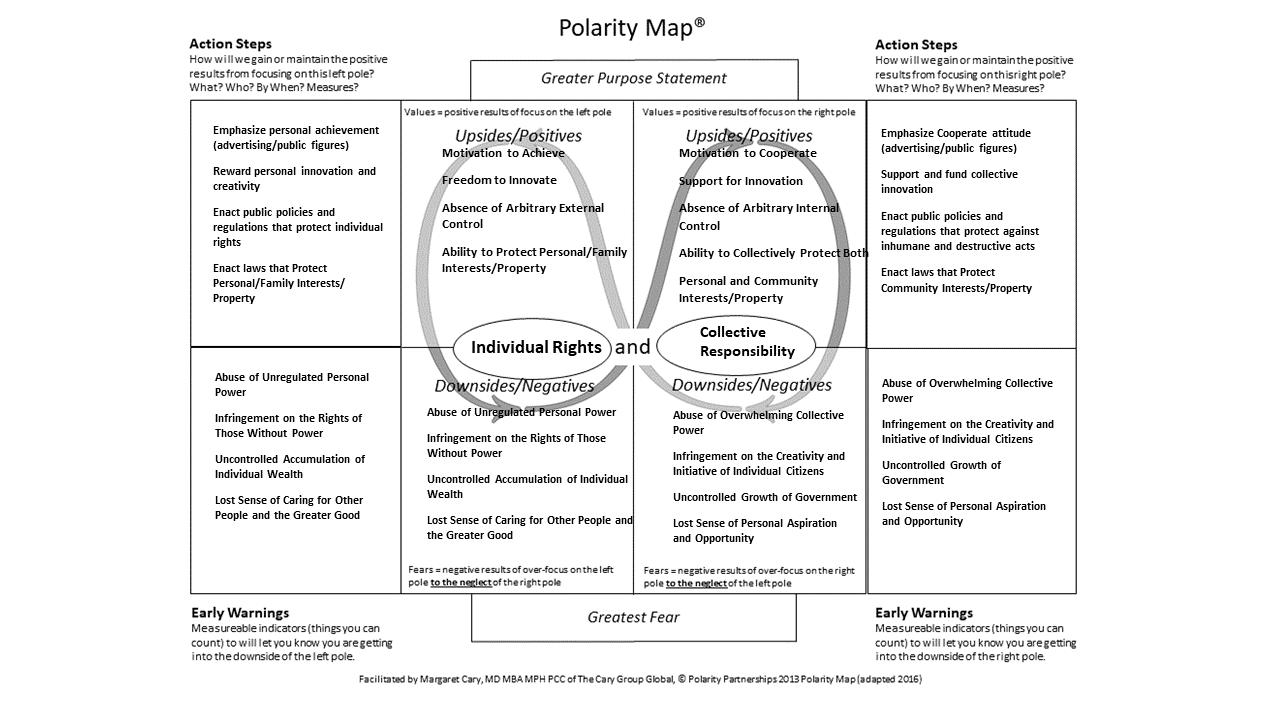
The Polarity Graph
Here is what the polarity-based dynamics of our policy deliberations might look like if mapped on a polarity graph:
A Polarity Analysis
With this preliminary framing and charting completed, we turn to what happens when we try to maximize the benefits of either side at the expense of the other side. In the case of supporting individual rights, the maximization of support for personal initiatives and ambitions would (as the epidemiological models indicate) tend to delay but ultimately accelerate the acquisition of personal wealth and power, ultimately leading to the formation of an unregulated and often abusive oligarchy (composed of the super-wealthy). This is what Fromm described as negative freedom. Furthermore, we now know that an emphasis on personal rights does not inevitably produce increased desire to achieve or innovate. The “have-nots” are much more likely to fall into a state of despair and lethargy—alienated from the society in which they now live. We would soon witness societal disruption and even revolution as the power and wealth chasm grows wider. At some point, we might find some social reform (or at least increases in charitable contributions) but would probably find that it is too little and too late.









